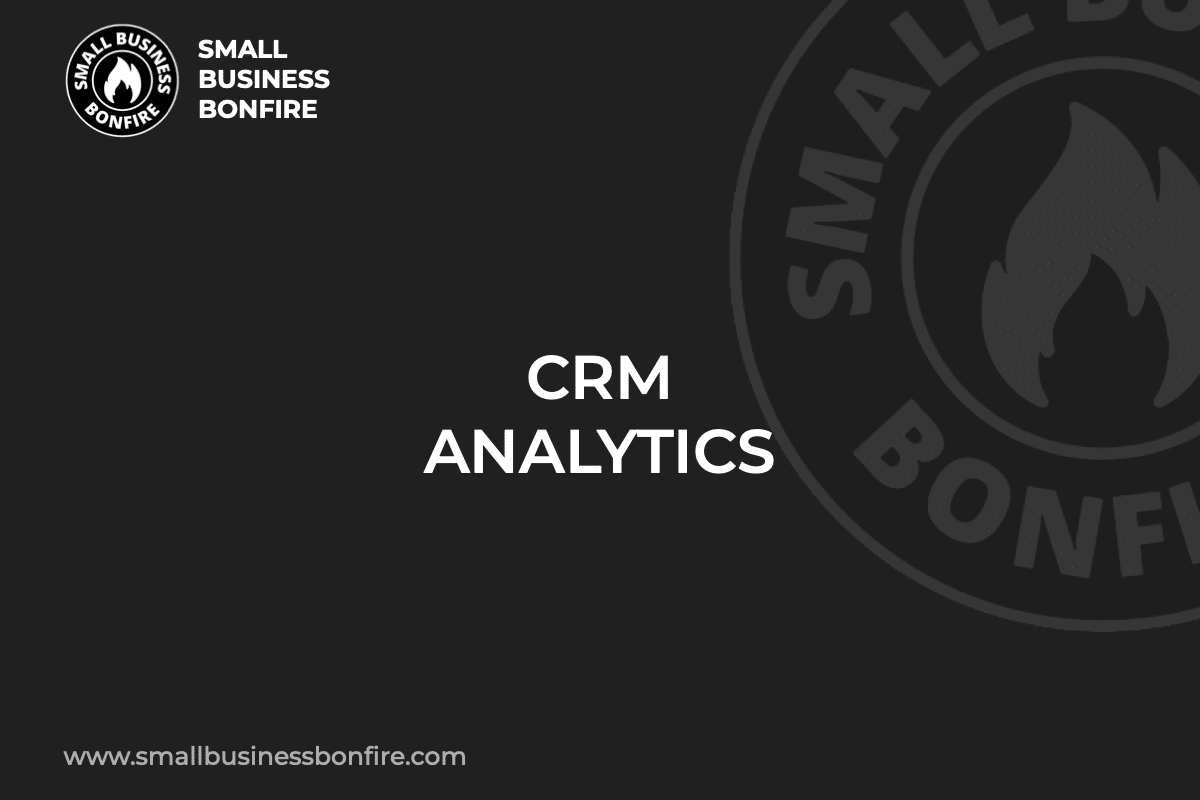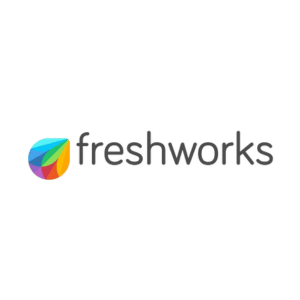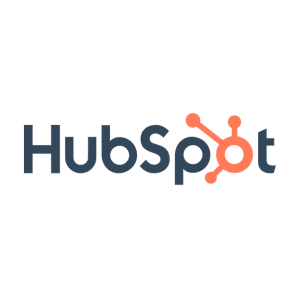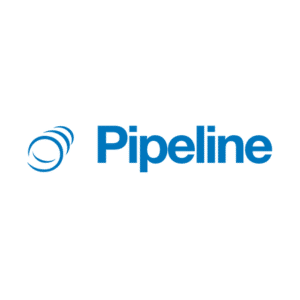Do you have a customer relationship management system that offers seemingly endless data reports and analytics?
While this information is excellent, CRM analytics aren’t helpful if you can’t understand what they mean.
Hi! I’m AJ, and I’ve used CRM platforms for several years. Knowing how to use CRM analytics to my advantage allowed me to sell my company for multiple seven figures.
I’ve compiled this guide to help fellow business owners understand CRM analytics and how they can use this data to build customer relationships.
How can analytics improve your business results? Let’s take a look!
Key Takeaways
- CRM analytics are internal and external data that help your business improve its operations.
- Accurate CRM analytics improve consumer relationships, increase sales, offer in-depth customer information, and improve retention rates.
- You must track pre and post-sale CRM analytics to understand customer buying habits and employee efficiency.
Related Reading: Best CRM for Small Businesses
SBB Featured Partners
What is CRM Analytics?
CRM analytics are data that tell you how your business’s sales and customer service perform.
On top of that, this data collects and organizes customer information, allowing you to make smarter business decisions because data drives them.
I obtain the data from my CRM platform whenever I use CRM analytics. That way, I can automate data collection and report generation.
Depending on the CRM model you are using, you can access different types of analytics.
How Do CRM Analytics Work?
CRM analytics work by using customer data that your CRM platform collects.
That said, some systems have a CRM analytics app that operates separately from other functions.
However, many CRM systems collect data through the following techniques:
- Customer conversations
- Social media engagement
- Email marketing
- Website surveys
- Email collection methods
- Customer shopping patterns on their website
Regardless of where your data sources originate, collecting CRM analytics is essential because this data fuels future business decisions.
Benefits of CRM Analytics
As I’ve mentioned, CRM analytics are integral to your CRM system.
Below I’ve listed the top six advantages of utilizing CRM analytics! Let’s check them out.
Better Customer Service Evaluations
First, CRM analytics offer data insights into your customer service department’s performance.
Therefore, you can see customer satisfaction levels and how well your team handles customer inquiries and complaints.
With this data, you can improve customer relationships if there are weak points because CRM analytics provide actionable insights.
More Accurate Customer Data
CRM analytics provide intelligent insights for your customer base.
Whether you use customer information for email marketing or social media, you can feel confident in your targeting.
Real-time data ensures you know everything you must know about your target audience.
CRM data cleansing tools ensure accuracy, so you don’t waste resources on bad data.
Increased Customer Retention
Does your company have a high customer turnover rate? CRM analytics can improve repeat customers.
CRMs collect information from multiple data sources, ensuring you understand your potential and existing customers.
As a result, you offer personalized marketing and customer service messages, building brand loyalty and retention rates.
Increased Customer Acquisition
CRM analytics help you create meaningful customer acquisition strategies because you can use data to target prospects and customers who may be interested in your product or services.
AI-powered predictions segment potential customers into groups more likely to need or want your company’s offerings.
Better CRM Reporting
Reporting capabilities are a vital aspect of a successful CRM platform.
With CRM analytics, your company can access detailed reports with suggestions for future decisions.
Additionally, better CRM reporting ensures you immediately identify weak spots in your sales process, marketing campaign, etc.
Better CRM Data Management
Finally, CRM analytics offer better CRM data management.
When you have numerous sources of customer information, CRM data entry, and integration help to bring all the knowledge into a single source.
As a result, you can review and analyze trends quickly while ensuring your team can access the most up-to-date customer information.
In the realm of customer relationship management, CRM data is the goldmine that fuels business decisions, offering insights into customer behavior, preferences, and interactions.
One of the key techniques to fully harness this potential is through CRM data mining, a process that sifts through large sets of CRM data to discover meaningful patterns and trends.
The destination of these exploration journeys is usually the CRM database, a centralized repository that stores all customer-related information.
By leveraging the power of Big Data CRM, businesses can analyze vast volumes of customer data in real time, paving the way for personalized interactions and enhanced customer experience.
As you can see, CRM data management is a significant benefit of CRM analytics as it consolidates multiple sources of customer information into one accessible platform, allowing for swift review, analysis of trends, and ensuring that your team has access to the most current customer data.
CRM Analytics Examples
There are several ways to utilize CRM analytics to your company’s advantage. From sales to customer service, detailed data can improve every aspect of your company!
CRM Analytics for Sales
Ensuring your sales reps have accurate information is essential. That way, your team understands its customer base and creates personalized selling experiences.
Pipeline Conversion Analytics
Sales pipeline conversion rates indicate the percentage of potential and existing buyers that made it through the entire sales process.
Essentially, this data indicates how well your team converts prospects into paying customers!
Prospect to Lead to Sale Ratios
The prospect to lead to sale metric indicates how many prospects your team recruits to make one sale.
Analyzing this data is excellent because you can understand which selling techniques are working and which need improvement.
Sales Forecasting Analytics
CRM analytics can also provide sales forecasting information.
Sales forecasting utilizes internal and external data to predict future sales patterns for your company.
As a result, you can alter your sales and marketing techniques when circumstances change.
CRM Analytics for Marketing
Marketing data provides insight into behavioral patterns and effective targeting techniques.
Let’s see how CRM analytics can assist your marketing team!
Number of MQL Leads
An MQL (Marketing Qualified Lead) is a lead who has shown interest in your company’s products or services based on your marketing campaigns.
These leads are helpful because they indicate which marketing campaigns attract different customer segments.
An MQL lead is usually more likely to purchase your company’s products or services.
Cost to Aquire a Customer Analytics
CRM analytics show how much you spend on recruiting and advertising to acquire one customer.
You want this cost to be as low as possible. And if the cost to acquire a customer is higher than their average revenue, analytical CRM offers suggestions to change that!
Campaign Cost to Money Earned
Finally, analyzing the cost-to-money earned ratio informs you how much your company generates from each marketing campaign.
So, if a campaign produces little to no revenue, it’s essential to consider alternative methods that generate more sales.
These actionable insights ensure you aren’t pumping money into an ineffective marketing technique!
CRM Analytics for Customer Service
Lastly, analytics provide deeper insights into your customer service department’s effectiveness.
An efficient customer service team builds brand loyalty and encourages customers to repurchase things!
Number of Customer Complaints
CRM analytics track the number of customer complaints your company receives.
Reviewing these complaints to improve customer service and shopping experience is essential.
Do several customers complain about the same thing? Use these complaints to adjust your business’s operations.
Number of Customer Interactions
Utilize your CRM system to analyze customer interactions.
These interactions provide a lot of valuable insights, including the following:
- Effective interaction methods
- Groups of customers who interact with your company
- How many times a customer interacts with a sales representative
Customer Churn Rate
The customer churn rate is the percentage of customers who stop using your company’s products or services.
Analyzing this data lets you identify why people leave your business and how your team can adjust its operations.
What Types of CRM Analytics Should You Track?
You must track numerous common CRM metrics to understand your customer base, sales pipeline, and marketing techniques.
Pre-Sale CRM Analytics
Here are the pre-sale analytics your company should track!
Number of New CRM Prospects
The first stage your sales reps take is identifying and contacting prospects (consumers who might be interested in your company).
Track the emails and calls throughout this phase to determine the effective techniques and weak points.
Number of New CRM Leads
Collecting and tracking all your data sources about leads helps you determine conversion rates.
Additionally, the number of new leads indicates how well each sales team member performs.
Prospect to Lead Ratio
How many leads convert to customers?
The prospect-to-lead ratio helps you understand the effectiveness of your sales team and marketing tactics.
CRM Sales Forecasting
Sales forecasting estimates future revenue by predicting the number of products or services your company will sell.
CRMs offer valuable business intelligence, presenting accurate sales forecasting based on the market, previous sales, and other factors.
CRM Sales Conversions
How successful is your sales cycle? The sales conversion rate reveals how many prospects purchase something from your company.
Additionally, the number of conversions showcases how well your sales representatives perform and identify customer needs.
CRM Sales Cycle
Your company’s sales cycle is the repetitive tasks your sales team follows to convert leads into customers.
A sales cycle ensures you always know what your team’s next move should be and where each lead is within the process.
CRM Sales Pipeline
Many people confuse sales pipelines with cycles.
However, a sales pipeline is a visual way of tracking potential buyers as they move through the sales process.
Sales pipelines are often displayed as a horizontal bar or a funnel.
CRM Sales Goals
Lastly, you can use CRM analytics to set achievable (yet ambitious) sales goals.
The important metrics CRMs present can help you see areas where your sales team must improve.
Therefore, you challenge your sales manager and representatives without forcing unrealistic goals.
Post-Sale CRM Analytics
CRM workflows help your company convert leads into customers. Still, it’s vital to collect data after your team makes sales.
Problem Tracking
Ensure your company records the problems your customers note about your products or services.
Correcting recurring mistakes is essential to keep your customer base happy.
Additional Purchases
An effective sales strategy is pushing additional products or services to customers who’ve already bought something.
Track these additional purchases so you know what products you should suggest in the future!
Purchasing Patterns
Utilize CRM analytics to track your customers’ purchasing patterns.
For instance, do they subscribe to any services your company offers? Do they regularly buy the same product?
When you bring data like this to your marketing team, they can retain these customers via discounts, promotions, etc.
Segmentation
Use CRM analytics to divide your customers into groups that are most and least likely to continue buying your products and services.
Creating segments makes it easier to create marketing campaigns in the future.
Customer Spending
Each customer spends a different amount.
Determining each customer’s impact on your company’s revenue is important, ensuring you allocate the correct resources to each relationship.
General Project Management
Did you know you can use your CRM to identify key activities in your sales process?
By doing so, your team can target current customers for future purchases, increasing retention rates.
Cost to Aquire a Customer
When you enable CRM analytics to generate reports, it’s easy to see how much you spent to acquire a customer.
Utilize this data to ensure you aren’t overspending.
Customer Churn Rate
Lastly, your CRM helps you measure customer churn rate.
The churn rate shows the percentage of customers who stopped using your products or services.
Analyzing this data helps you identify why people leave your business and adjust operations to reduce attrition rates.
How to Track CRM Analytics
Below I’ve compiled four simple steps to track CRM analytics. Although this may seem challenging, the correct information ensures you and your team track data efficiently.
Step 1: Find the Best CRM Software
The first step is finding the best CRM software. Each company is different depending on its industry, size, and needs.
Some popular CRM systems include the following:
- Salesforce CRM analytics
- HubSpot
- Monday
Step 2: Decide on the Metrics You’d Like to Track
Next, you must decide which metrics your business tracks.
CRMs are powerful tools and capable of tracking various types of information.
Track metrics your company currently struggles with so your CRM can quickly pinpoint and correct the weak spot.
Step 3: Setup Your CRM Dashboard
Step three is setting up your CRM dashboard. CRM analytics dashboards present essential information in a condensed format.
That way, you and your team immediately see the most important CRM analytics.
Step 4: Hold Weekly CRM Analytics Standup Meetings
Lastly, you must hold weekly meetings with your team to analyze your data.
Regularly reviewing your CRM analytics ensures your CRM workflow functions properly and nothing is slipping through the cracks.
What to Look for in a CRM Analytics Tool
There are numerous things to look for in a CRM analytics tool, including the following aspects:
- Price
- Ease of use
- Compatibility with your CRM
- Trackable metrics
- Mobile capabilities
Use your existing CRM analytics tool if possible because it’s easier to implement and teach employees how to use it.
Best CRM Software with Analytics
Here are four of my favorite CRM software providers with analytics! These are perfect if you’re unsure where to start.
HubSpot CRM
HubSpot is an excellent CRM for growing businesses on a tight budget because there is a free version of the program.
HubSpot allows you to track several CRM analytics, including sales activity, productivity, etc.
Also, artificial intelligence features are available!
If you want to learn more about HubSpot, take a look at our full HubSpot CRM Review!
Monday Sales CRM
Monday’s sales CRM is easy to use, affordable, and advanced.
That said, some of the CRM analytics Monday tracks and organizes include the following:
- Lead management and capturing
- Marketing activities
- Customer relations
- Contact management
- Team tasks
Are you interested in learning about Monday Sales? Check out our full Monday CRM Review!
Freshsales
Freshsales is ideal for sales teams because it streamlines identifying leads and accelerating follow-ups.
The numerous insights ensure your sales representatives always have access to information that increases revenue.
Check out our full Freshsales review to learn more about this software!
Pipeline
Pipeline’s CRM analytics help you and your team find and close more deals faster because of its automated workflow.
Also, Pipeline offers a free demo and trial period to test whether the technology matches your business needs!
Learn more about Pipeline in our full Pipeline CRM Review!
CRM Analytics Final Thoughts
CRM analytics formerly were not used by many small businesses.
However, the rise in CRM has proven how analytics increase efficiency, streamline the sales process, and organize data.
What CRM analytics tool does your company use? Let us know in the comment section!
Newsletter Signup
Join The Leads Field Guide Newsletter for tips, strategies and (free) resources for growing your leads, and closing more deals.




